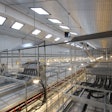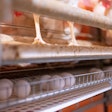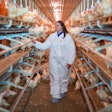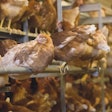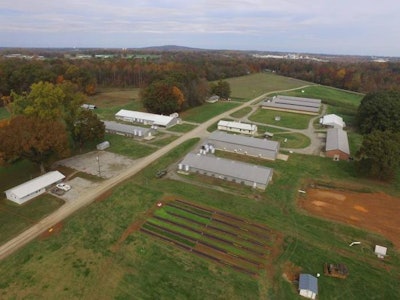
More than a year after North Carolina State University announced a project to expand its research of aviary laying systems, the university is looking for additional funding to make the project a reality.
In January 2015, Dr. Kenneth Anderson, a professor of poultry science and director of the North Carolina Layer Performance and Management Program, announced the university was looking to raise $3.2 million to keep the Layer Performance and Management Test up-to-date with how laying hens are being housed today.
In an interview with Egg Industry, Anderson said the university is halfway to its fundraising goal, with about $1.6 million committed toward the project. The $3.2 million will fund a new building at the Piedmont Research Station, new housing equipment, operation of the new building and an endowed professorship in layer research.
Anderson said ground could be broken on the new building by the middle of 2016 and the birds could be going in by the end of 2017. That, he said, depends on industry funding and support coming into place.
So far, all of the funding has come from the industry, with the largest commitment coming from the owners of Nashville, North Carolina, egg and feed company Braswell Foods. Anderson said the Braswell family is committed to funding the endowed professorship and more than 50 percent of the building’s structure costs.
Anderson said the test has about 15,000 hens housed in conventional or battery cages, enrichable cages, enriched cages, cage-free floor pens and range huts with attached outdoor pens, but it does not test aviary systems.
“With all of the shifting to cage-free production by a lot of the large, mercantile and restaurant chains … it’s more and more important that we develop a research facility that can look at problems or issues associated with those production systems and actually compare them to what we’ve been doing or what we’ve been moving toward,” Anderson said. “We need to know and understand more about the cage-free system and how the different genetic stock interacts with that system.”
Anderson said the test will study how birds interact with the aviary systems – a type of cage-free laying system that allows hens to move freely around the house and better utilize the three-dimensional space of the house – and how these systems affect the bird’s health and performance. The new building could house as many as 10,000 layers and test a variety of aviary systems. The facility will have an aviaries that will allow for outdoor access – onto verandas attached to the building and into a “free-range” paddocks – as well as aviaries that are housed completely indoors. The different settings will allow the facility to research how birds perform under European Union housing standards and see if those standards will work in the U.S.
Along with testing laying performance, the aviary building will allow researchers to monitor how the environment influences the hen’s behavior, compared with the other laying systems it tests.
Because the funding is not yet complete and design work is just getting started, Anderson could not say whom will be furnishing the laying equipment. In 2015, Anderson said the German equipment company SALMET GmbH & Co. KG had pledged to provide half of the equipment for the proposed new aviary building. That agreement is still in place, Anderson said.
Ideally, the proposed building would house 36 replications each housing 200 to 300 birds. At the minimum, it will house 18 replications. Anderson said the goal is to test 18 different strains of hens. Which breeds are placed in which laying systems will be at the discretion of the genetics companies that provide the birds.
He said the project aims to see how the different strains interact with the different laying systems, but the genetics companies will ultimately decide which strains are tested in which housing systems.
“It’ll vary from year to year. Right now, we are looking in the layer test that is coming up right now at, at least, 18 strains,” Anderson said. “Most of them will be looked at in four environments, probably four to five of them will be looked at in only two environments and that would be the free range and cage free.”
Anderson could not say which breeding companies will be providing animals for the next layer test. He said information about previous tests, which includes full information on the birds studied, can be found online.










